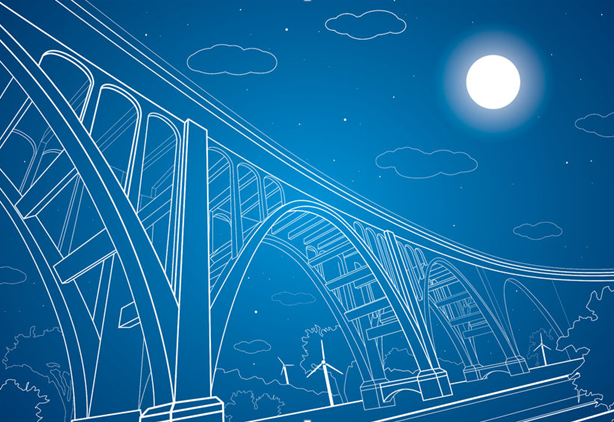As spectacular as the Golden Gate Bridge, the Brooklyn Bridge, and other famous bridges around the world are, in the end they are just bridges. They allow vehicles to pass over a body of water and connect roads, train tracks, and walkways. Stateside, that could change as early as 2019 with the opening of the 11th Street Bridge Park in Washington, D.C. This structure and others like it offer glimpse into the possible future of bridges.
Bridges in the Future Will Exist for Different Reasons
Today’s bridges are used for practical purposes only, despite their complexity of design. In the future, bridges may resemble more of a community like the up and coming 11th Street Bridge Park. Its stated purpose is to integrate communities that fall east of the Anacostia River with the Capitol Hill neighborhood.
One way the project developers hope to accomplish this is not to allow any cars on the bridge at all. That almost seems backwards from our current perspective, but the hope is that only allowing pedestrian traffic will foster deeper connections between people who make both areas their home. The bridge decks will contain outdoor eating areas, walking paths, a place to watch live performances, and many other amenities. If the concept of this bridge park catches on, bridges will no longer be just bridges. They may just replace modern-day parks as the place where people gather to play and socialize.
Expansion of the Brooklyn Bridge
The Brooklyn Bridge in New York is a popular crossing for cars, bicycles, and pedestrians. However, it has become so popular that it is no longer feasible to operate it in the same manner. Between 2008 and 2015, bicycle traffic increased by 93 percent and pedestrian traffic by 275 percent during peak hours. Less than 10 feet separates the two spaces, which threatens the safety of both groups. As is stands right now, walkers must cross across the bike lane to exit the bridge.
City planners are currently considering different scenarios to deal with bicycle and pedestrian traffic jams on the bridge. One is to place new bikeways or walking paths on the outside of the bridge. This is a unique approach to expansion that not everyone feels prepared to accept. Preservationists, for example, want to leave the 133-year-old bridge exactly as it stands today. However, reality sometimes dictates changing even the most beloved and historic icons in a community. Gaining an architectural marvel in exchange may be just what it takes to convince some historians of the necessity.
Future Bridge Developments Across the World
Architects worldwide have some interesting developments in the works when it comes to bridges. Here are just three of them:
- Steven Hall Architects, Copenhagen: This development will link two 65-meter skyscrapers with a pedestrian and bicycle bridge.
- Pont Jean-Jacques Bosc, Bordeaux: Set to open in 2018, this bridge will periodically restrict traffic so it can be available for concerts, fairs, and festivals.
- Embassy Gardens Residential Complex, London: Footpaths aren’t the only way to connect two buildings. In 2018, residents of these complexes will be able to swim in a pool connecting them to get from one building to the other.
It appears these projects are only the beginning of a promising new trend.

Leave a Reply